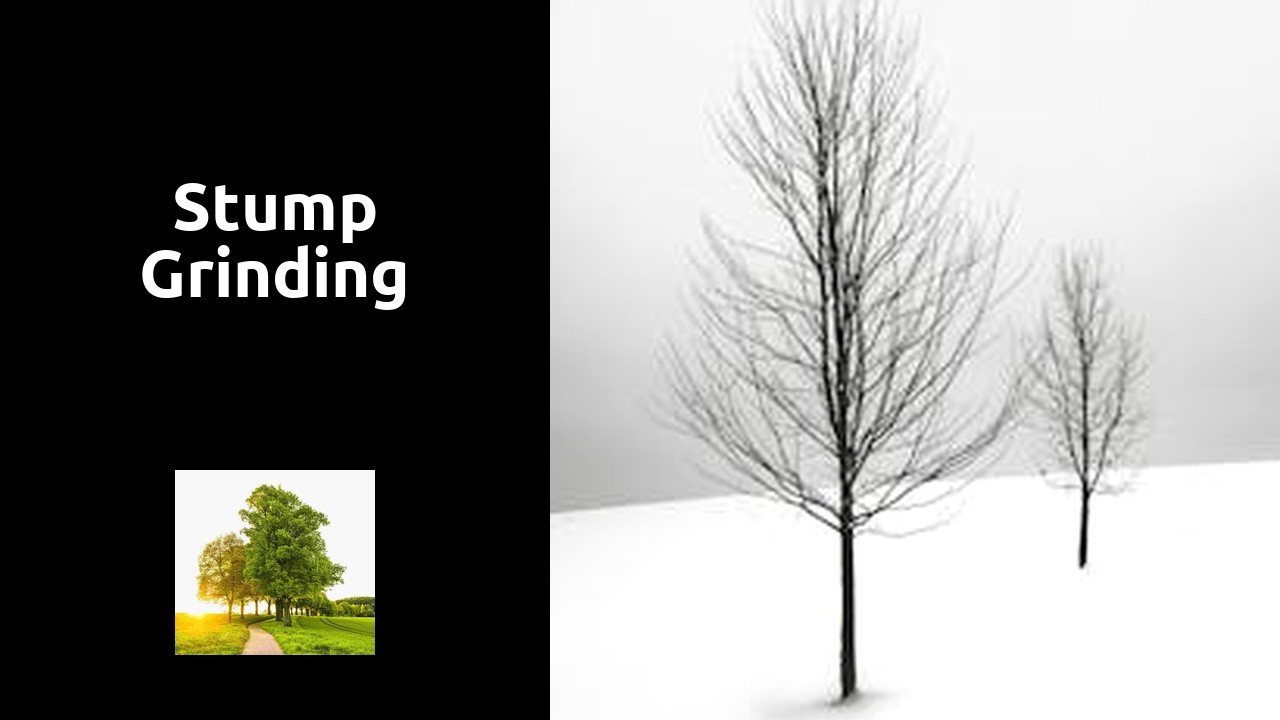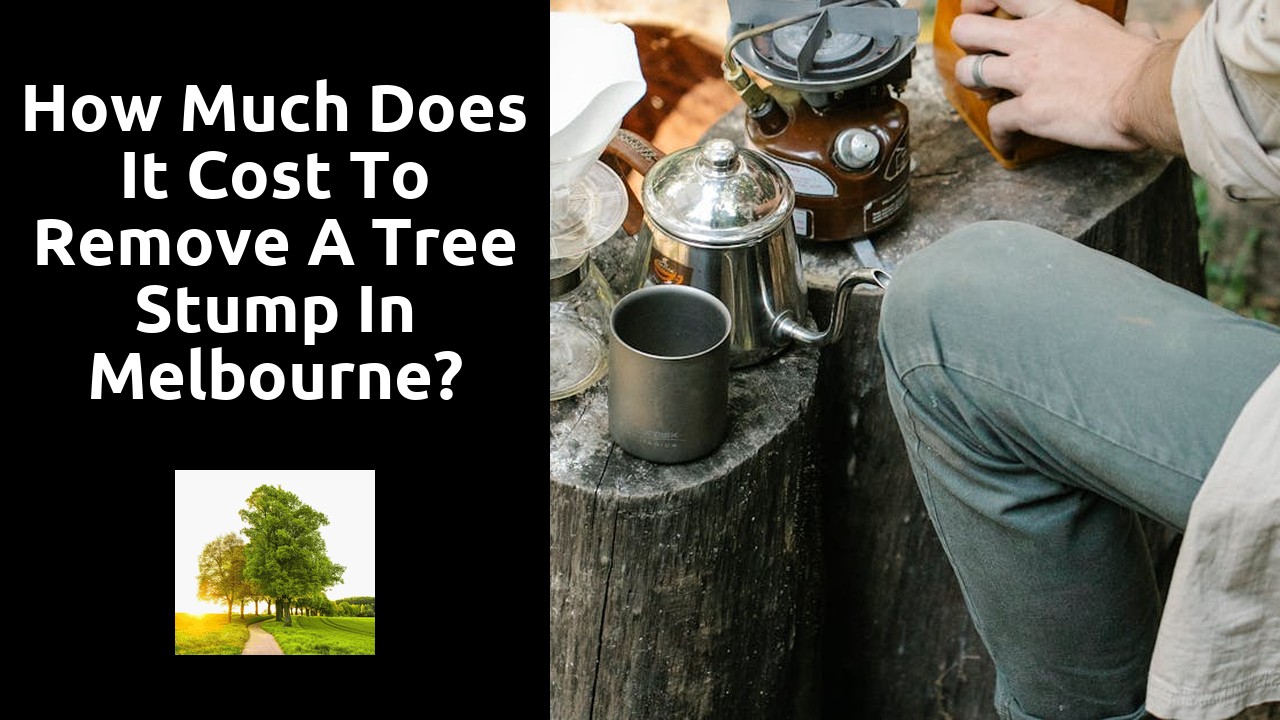
Stump Grinding
Reiners Tree Service offers professional stump grinding services to effectively remove tree stumps from residential and commercial properties. Using specialized equipment, our experienced team ensures that stumps are ground down to below ground level, allowing for the area to be re-landscaped or repurposed without any hindrance. Stump grinding not only improves the aesthetic appeal of a property but also prevents potential safety hazards such as tripping or attracting pests. With Reiners Tree Service, customers can trust that their stump removal needs will be efficiently and effectively taken care of. Contact us today for a free estimate on our stump grinding services.
Environmental Impact of Stump Grinding
Stump grinding can have both positive and negative environmental impacts, depending on the circumstances. One major benefit is that it allows for the reuse of the land, preventing potential hazards such as tripping or pest infestations. By removing the stump, it also eliminates the need for harmful chemicals that may have been used to treat diseased or decaying trees. However, the process of stump grinding can result in the release of carbon dioxide into the atmosphere, contributing to greenhouse gas emissions. This impact can be mitigated by choosing eco-friendly stump removal companies that prioritize sustainable practices.
Additionally, stump grinding generates leftover wood chips and debris that need to be properly disposed of. While these remnants can be repurposed for mulch or compost, improper handling may lead to negative consequences such as soil contamination or waste buildup. Recycling tree debris is crucial in reducing the overall environmental footprint of stump removal operations. It is essential for both homeowners and tree service providers to prioritize responsible waste management practices to minimize adverse effects on the environment.
Recycling Tree Debris
When it comes to stump grinding, recycling tree debris is a key step in minimizing waste and promoting sustainability. Instead of letting the remnants go to a landfill, tree debris can be repurposed for various beneficial uses. One common method is creating mulch from the wood chips, which can then be used to enrich the soil in gardens or landscaping projects.
Furthermore, tree debris can also be transformed into compost, providing a natural and nutrient-rich fertilizer for plants. This eco-friendly approach not only reduces the need for chemical fertilizers but also contributes to the overall health of the soil. By utilizing tree debris in a constructive manner, we can close the loop in the natural cycle and promote a more sustainable environment for future generations.
Common Misconceptions About Stump Grinding
One common misconception about stump grinding is that it is an extremely noisy and disruptive process. In reality, with advancements in equipment and techniques, stump grinding can be relatively quiet and efficient. Modern stump grinders are designed to minimize noise levels and vibrations, making the process more bearable for both the operators and nearby residents. Additionally, stump grinding is a quick process compared to other methods of stump removal, reducing the overall disruption to your property.
Another misconception is that stump grinding is harmful to the surrounding environment. However, stump grinding is actually considered an eco-friendly method of stump removal. By grinding the stump into mulch that can be used elsewhere in your garden, you are recycling the tree debris and promoting sustainability. Stump grinding also eliminates the need for harsh chemicals or burning, which can have negative effects on the soil and nearby plants. Overall, stump grinding can be a beneficial and environmentally-conscious choice for removing unwanted tree stumps from your landscape.
Stump Regrowth Myths
Stump regrowth myths often circulate among homeowners who have recently had their trees removed. These misconceptions can lead to confusion and unnecessary worry. One common myth is that stumps treated with chemicals will never regrow. While chemical treatments can help prevent regrowth initially, they may not be entirely effective in the long term. It is essential to follow up with proper stump removal techniques to ensure the stump does not sprout new growth.
Another prevalent misconception is that covering a stump with soil will prevent regrowth. While adding soil may temporarily hide the stump from view, it does not address the root system beneath the surface. The roots can still send up shoots despite being covered. To effectively prevent regrowth, it is crucial to fully remove the stump and its root system. By debunking these regrowth myths, homeowners can make informed decisions about stump removal and prevent future landscaping issues.
Enhancing Your Landscape After Stump Grinding
After completing the stump grinding process, you have the opportunity to enhance your landscape and create a fresh, revitalized outdoor space. One effective way to do this is by strategically planting new trees to fill the void left behind. Planting new trees not only adds beauty to your surroundings but also helps improve air quality, provide shade, and attract wildlife to your garden. Consider the size, shape, and growth characteristics of the trees you choose to ensure they complement your landscape and thrive in their new environment.
In addition to planting new trees, you can further enhance your landscape by adding colorful shrubs, vibrant flowers, or decorative grasses. These plants can add texture, depth, and visual interest to your outdoor space, creating a more dynamic and inviting atmosphere. Incorporating a variety of plants with different bloom times can ensure a continuous display of colors throughout the seasons, enriching the overall appeal of your landscape.
Planting New Trees Strategically
When it comes to replacing trees after stump grinding, strategic planning is key to ensuring a healthy and visually appealing landscape. Consider the size and growth habits of the new trees you want to plant to prevent future issues. For example, avoid planting large trees too close to buildings or underground utilities that could cause damage as they mature.
Another important factor to consider when strategically planting new trees is the overall design and aesthetic of your landscape. Think about creating focal points or visual interest by planting trees of varying heights and colors. Mixing in different species can also help promote biodiversity and create a more dynamic and vibrant outdoor space.
FAQS
What is stump grinding?
Stump grinding is the process of using a machine to grind up the remaining tree stump below the surface of the ground.
Is stump grinding environmentally friendly?
Stump grinding is considered more environmentally friendly compared to other methods like burning or using chemicals to remove stumps, as it allows the stump to decompose naturally over time.
Can tree debris from stump grinding be recycled?
Yes, tree debris from stump grinding can be recycled into mulch or compost, providing a sustainable way to reuse the material.
Are there any common misconceptions about stump grinding?
One common misconception is that stumps will regrow if not completely removed, which is a myth as grinding the stump below the surface prevents regrowth.
How can I enhance my landscape after stump grinding?
After stump grinding, you can enhance your landscape by strategically planting new trees or plants in the area where the stump used to be, giving your outdoor space a fresh look.


